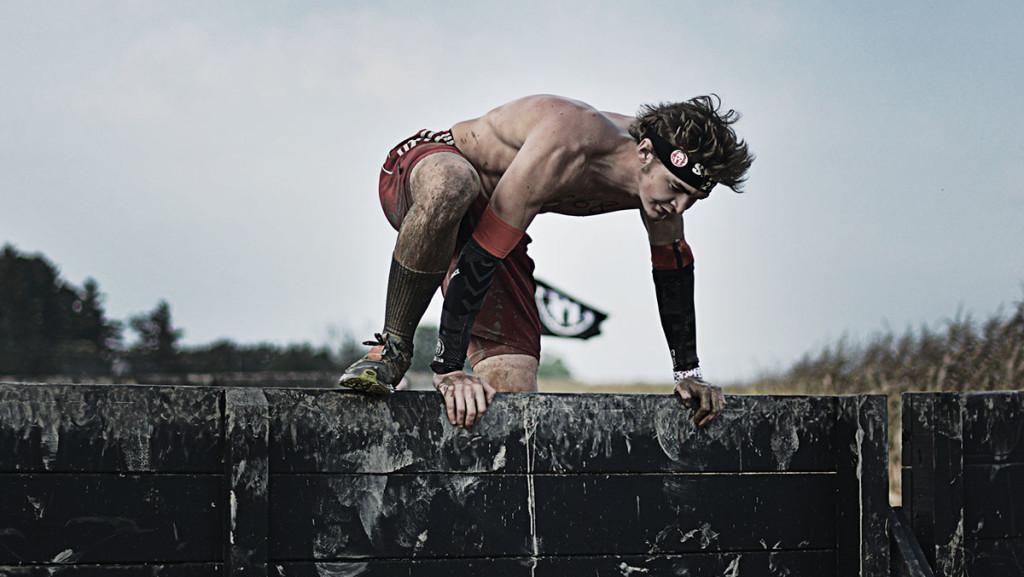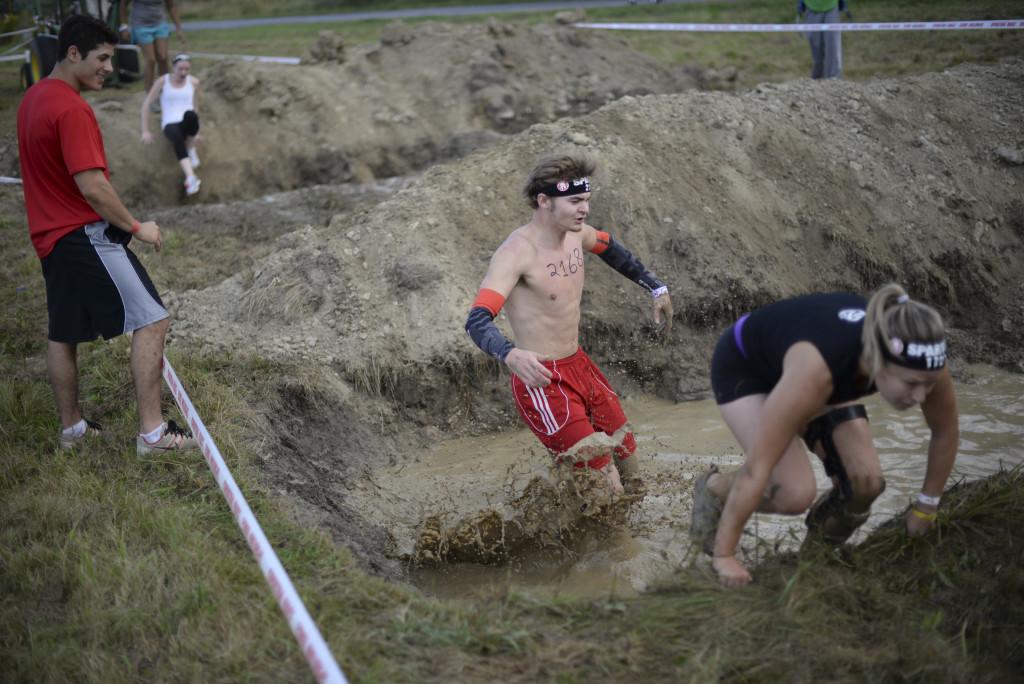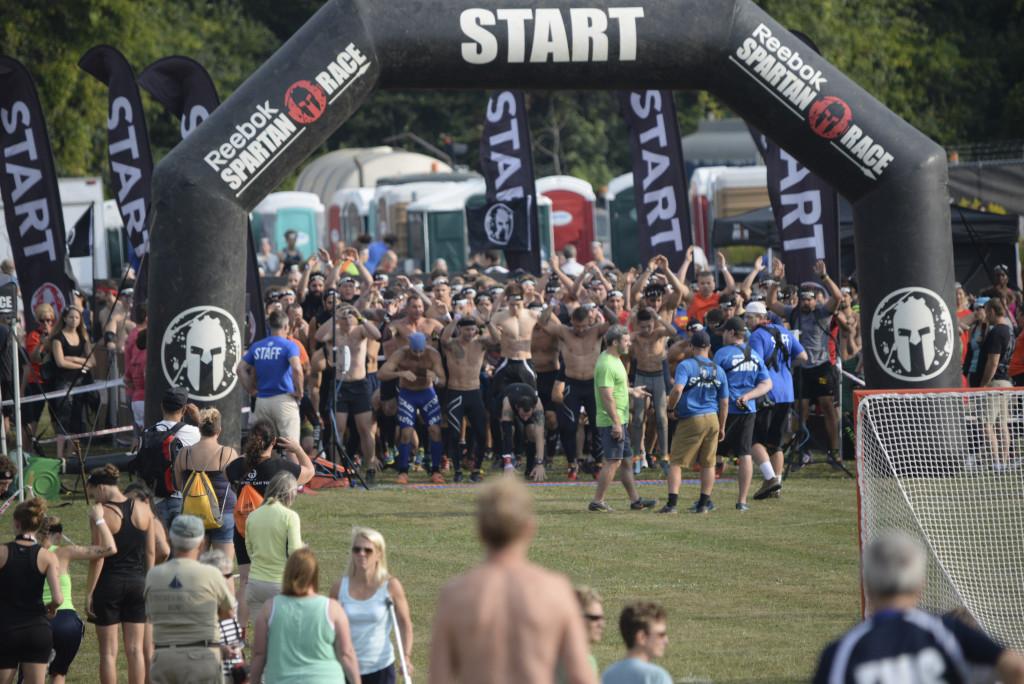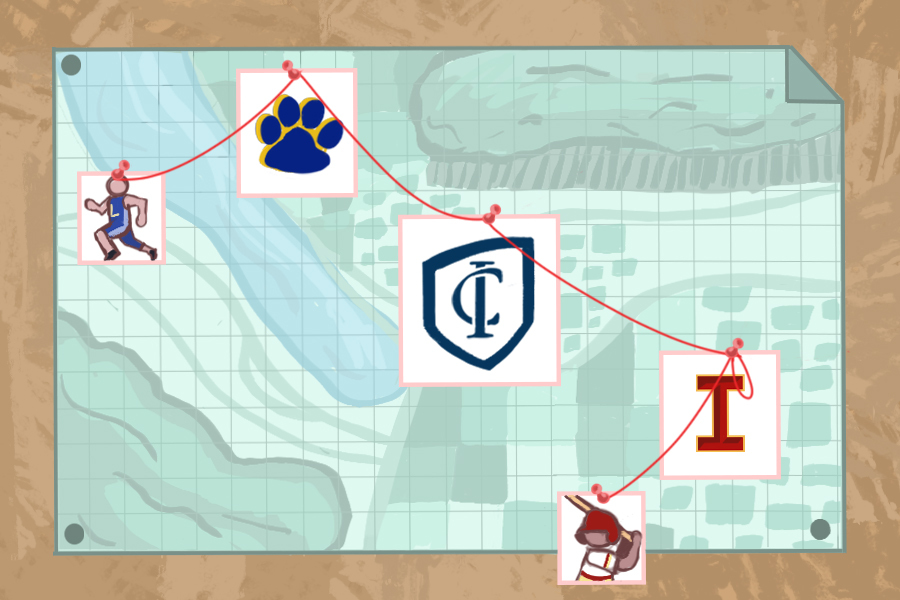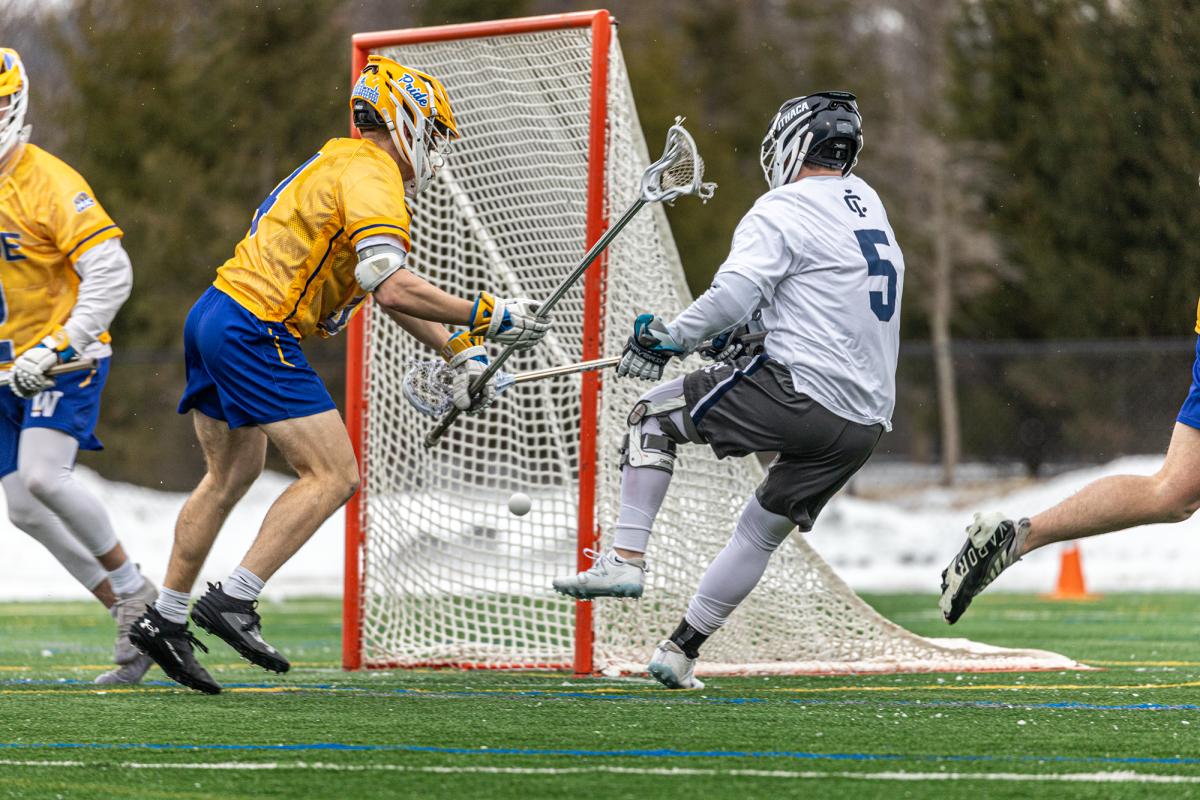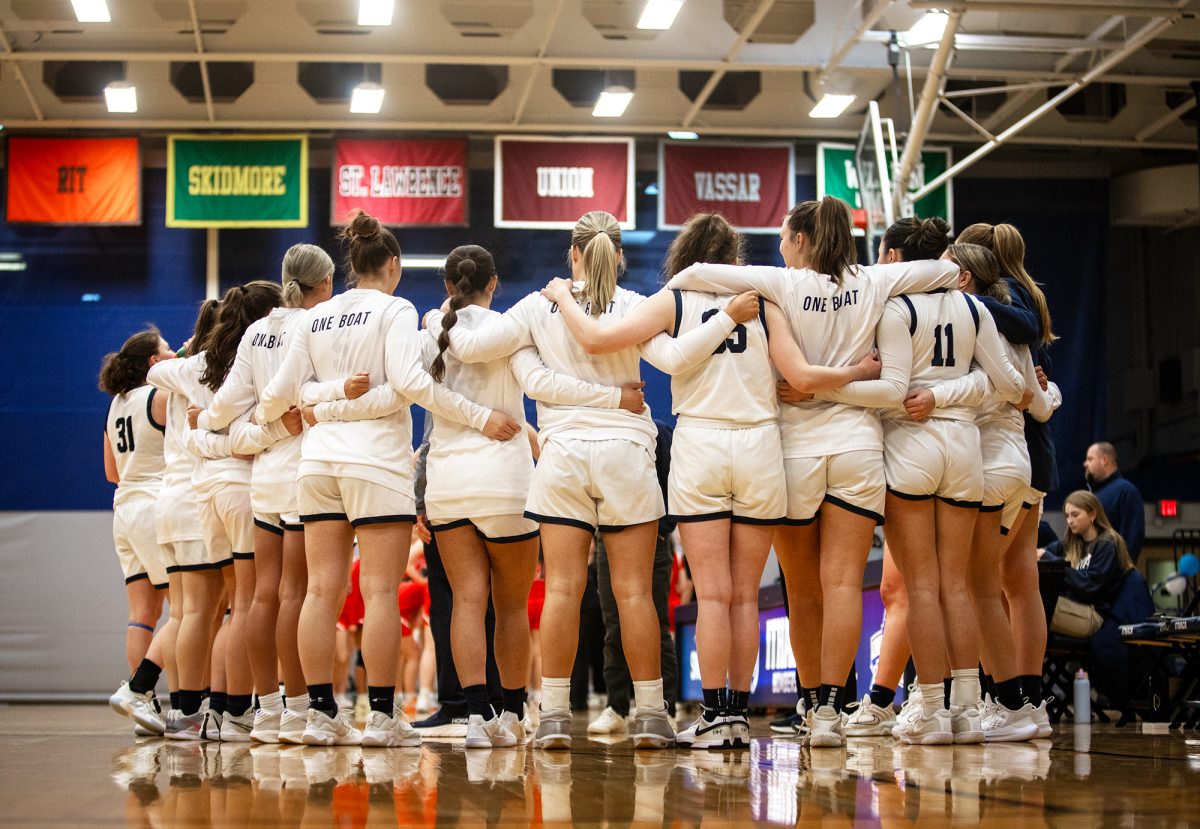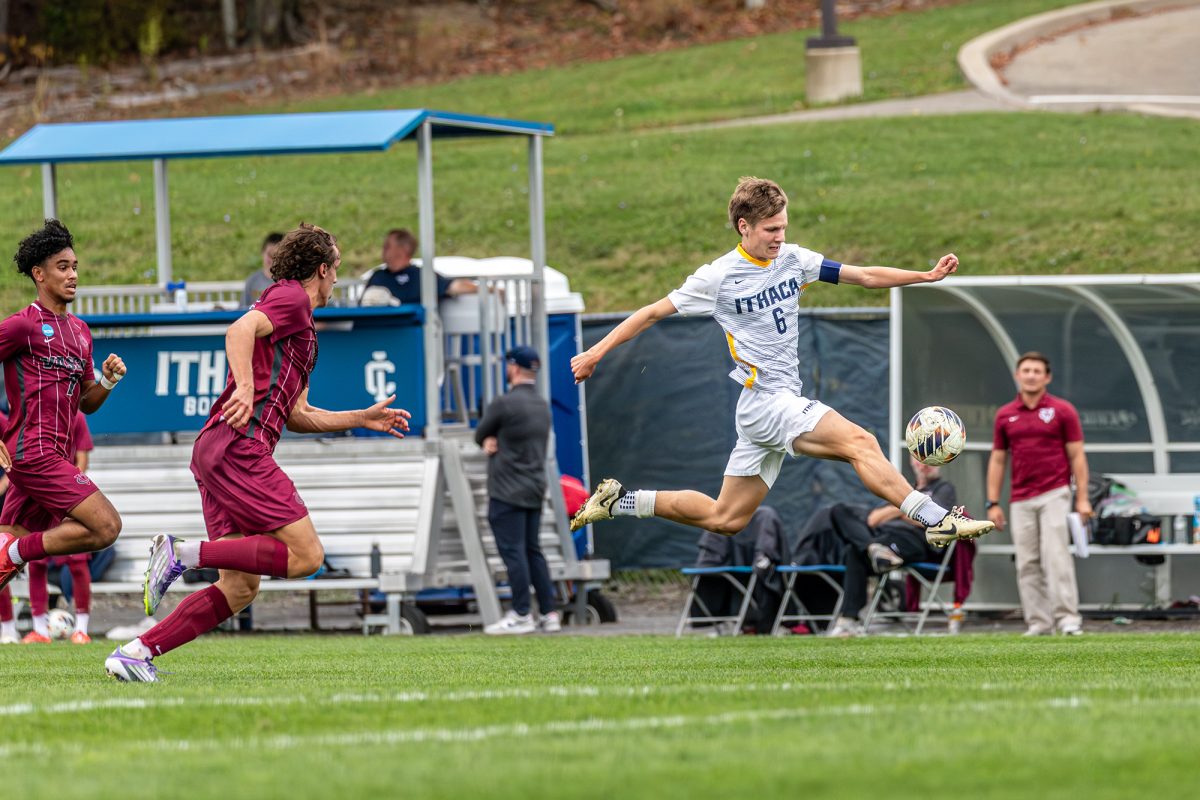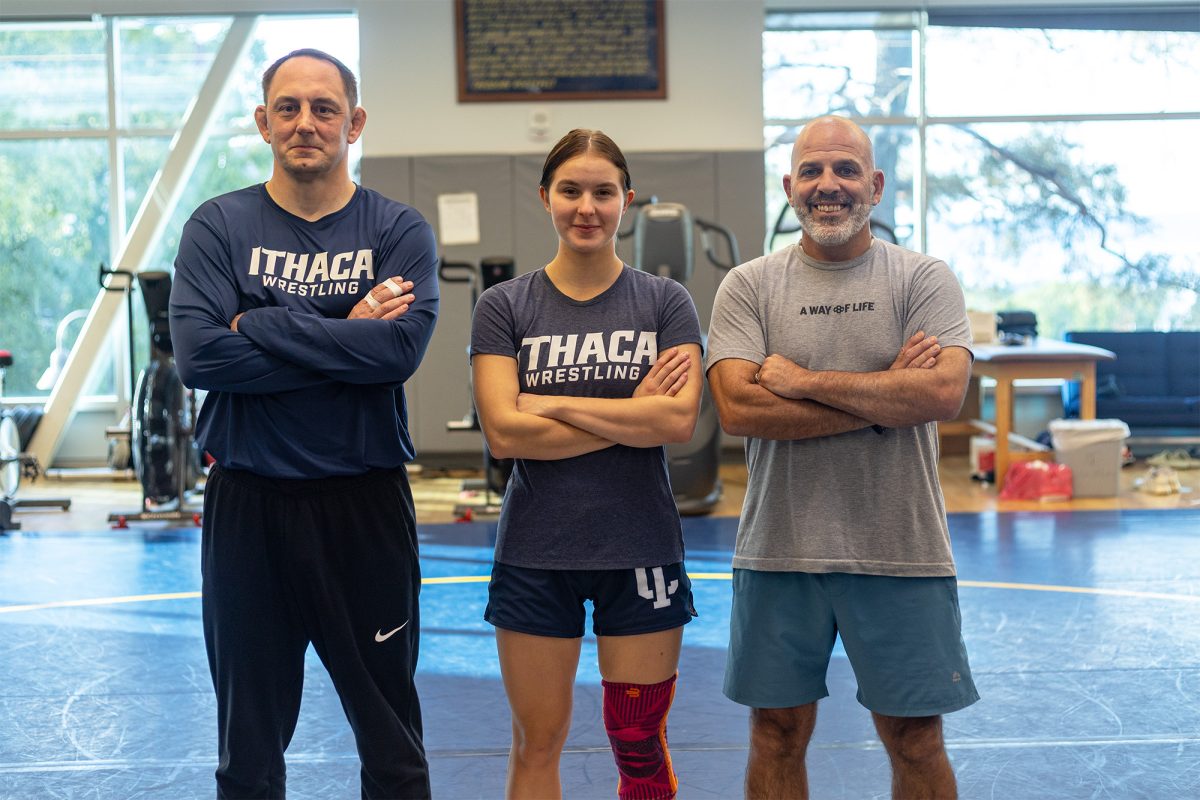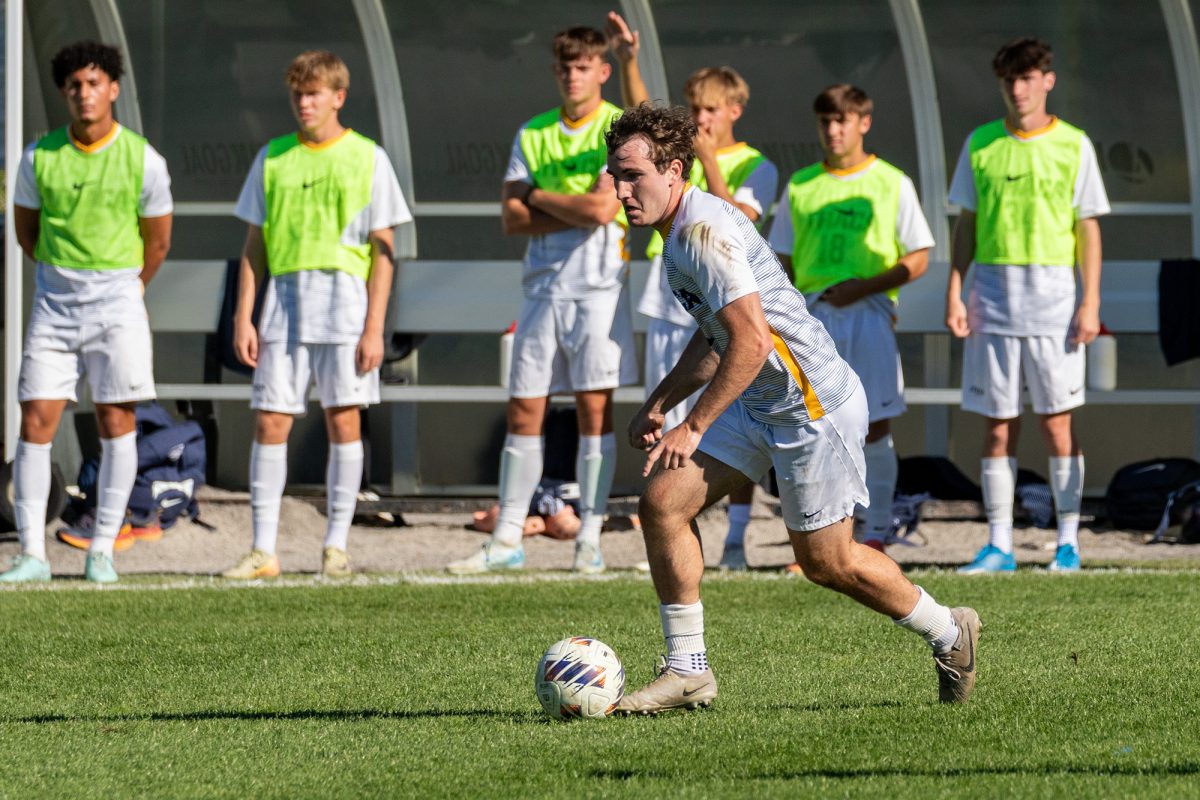Rob Lister utilizes much of his free time as an opportunity to learn more about competing in a Spartan Race. Anything that resembles a ditch or a hill excites him. His upbeat demeanor has helped him transition from an ordinary athlete to an expert in the art of running an obstacle course.
Lister, a junior at Ithaca College, knows all about what it takes to complete a commercial race today that derived from the ancient Greek city of Sparta.
“I love the idea of Spartans, going back to their times,” Lister said. “Feeling like a warrior, a sense of battle. The people around you are your competition, but they’re also your brothers. It’s all about the brotherhood. It’s about you against the course.”
The Spartan Race is a timed race riddled with mud, spears, walls, barbed wire and fire. Lister and other members of the Ithaca community competed in such a race Sept. 5 at Cornell University, which served as a fundraiser for United Way of Tompkins County. However, this was not Lister’s first time around the block — it was his 12th time.
It was the summer of 2012 when a high school friend introduced Lister to the unconventional sport. Lister said he was intrigued by how different the race was from anything else he had done athletically.
“I had just gotten into running over the summer,” Lister said. “He sent me the URL, and I thought it was cool. [I] signed up a month and [a] half in advance.”
He said preparation for his first Spartan Race was something that took some getting used to, as the races take a significant amount of self-determination and mental and physical strength.
Lister said the race helped him learn how to master the iconic drill, a burpee, which is an exercise resembling a pushup up to a standing position and back down again.
“It absolutely killed me,” Lister said. “I was nowhere near prepared for all of it. I failed a lot of obstacles, did a lot of burpees, just every step hurt. All I could think about was burgers and fries and nothing else.”
Before coming to college, Lister was primarily a distance runner and lifted at the gym once a week. When he came to college, Lister said, his passion for Spartan Races grew radically. He points to the hiking trails around campus and the facilities of the college as resources that helped to fuel his passion for the races.
“I really got into working out,” Lister said. “It was four or five days a week. I was rock climbing five or six days a week. I’ve gotten to the point where I can bench press my own weight and squat my own weight and a half.”
In fact, by the end of 2015, Lister will have competed in over 14 Spartan Races. From Mountain Creek, Vermont, to his hometown of Vernon Ridge, New Jersey, to Blue Mountain, Pennsylvania, Lister has competed all around the Northeast.
In 2014, he competed in the World Championships in Killington, Vermont.
Lister said the championship was by far the hardest race he has competed in because of its length and physical challenge.
“[It was] the hardest thing in my life,” Lister said. “It took me seven hours. The thought had actually crossed my mind to stop and say ‘I can’t do this.’”
Cornell University alumnus Joe DeSena, who created the company, held the first Spartan Race in 2010 in Williston, Vermont. The Spartan Race offers more than 120 races around the world every year and more than 50 around the United States. In 2013, NBC Sports showed a 90-minute taped special of the 2013 Spartan Race World Championships, garnering over $250,000 in revenue.
The Spartan Sprint contains 3-plus miles and more than 20 obstacles; the Super Spartan contains over 8 miles and approximately 20 obstacles, while the Spartan Beast contains about 13 miles and more than 25 obstacles. If able to complete all three in one calendar year, a runner has the opportunity to earn a Spartan Trifecta Tribe medal.
The race at Cornell was a mile and a half with 15 obstacles. Some of the obstacles included jumping into muddy pits, hurdling over hay bales and climbing across walls. Usually, if racers do not finish the obstacle, they must do burpees as a penalty. However, for this race, runners had to complete a 100-yard crab crawl instead.
Lister said this wasn’t the only difference the Cornell race offered. The spear throw was a football throw. The barbed wire pit was only plastic. The 40-pound sack carry was instead a tire carry.
“Your first race will be the worst until you start pushing new boundaries,” Lister said. “Knowing what to expect in terms of the obstacles makes it a lot easier and understanding their mindset when they are setting these courses. You don’t win a marathon by sprinting the first mile. You don’t win a Spartan Race by sprinting the first hill.”
Before the race, Lister participated in his routine warmup, involving stretching and weaving through huge crowds of people around the festival area.
“I just love the Spartan Race atmosphere,” Lister said. “I just love being in the festival area. A whole bunch of people in their workout gear, everyone is so excited for the race.”
At the start of the race, runners leap over a 10-foot wall before completing 10 burpees as the director makes a war speech, speaking words of encouragement to amp up the runners for the race.
Lister was focused, yet determined as he stared straight down the line, seeing the challenge that was in front of him.
As Lister trudged through the course, every obstacle appeared to be no match for him. There was no stutter or second guess, he just kept chugging along.
Before he knew it, Lister approached the last half mile, his eyes glanced in front as he saw the race was almost complete. One obstacle stood in his way: three hurdles. All of a sudden, the adrenaline came rushing all at once as he charged toward the finish line.
He finished the race in a time of 41:57, which placed him 31st overall out of 2,966 runners.
However, he was not done after that because when he finished the race, he proceeded to meet up with his two close friends, juniors Isaak van der Meulen and Matthew Hirsch, to run the race with them once more.
Lister said although he mostly participates in these races on his own, he was excited to run with his friends in the race.
“When I go with my friends, I kind of like being in the back of the pack,” Lister said. “It’s more about their fun and having fun through them.”
Meulen, who used to be a rower in high school, said Lister’s time commitment to Spartan Races convinced him.
“The fact that it’s all he talks about and all he does outside of schoolwork, it was really kind of to the point where since it’s here, we might as well do it to see what happens,” Meulen said.
Hirsch said the persona and intensity that Lister displays made him want to experience the race for himself.
“It’s such a huge part of his lifestyle, and he’s so passionate about it,” Hirsch said. “The enthusiasm he has for it is kind of contagious. He encouraged us and said it would be a fun thing to do, so we were in.”
Hirsch built his stamina over the summer in order to adequately prepare himself for the race.
“[Rob] told me about this race over the summer so I could train a little,” Hirsch said. “I ended up just trying to do distance running and stretch my limbs as much as I could. I started out over the summer running 3 1/2 to 4 miles, and by the end of the summer, I was able to do 7.”
These varying training methods are what Lister said embodies the sport.
“Spartan Race is one of those things I tell everyone just do it once,” Lister said. “I’m not saying you have to fall in love with it, I’m not saying that you have to dedicate your life to it like I do, but it’s a lot of fun getting to do all the different obstacles, getting to push yourself, understand your strengths and weaknesses because that’s the whole point of a Spartan Race. They’ve got something for everyone.”
Lister said he enjoys doing Spartan Races because he enjoys the uniqueness and the physical challenge of the race.
“For one thing, I’m crazy — delightfully crazy,” Lister said. “It gives me a sense of purpose, that sense of accomplishment. Come into a race, seeing this towering mountain above you, especially the ones that I’ve skied at. I’m used to going up a chairlift and skiing down. Getting to run up and down a mountain gives me that much more appreciation for how monstrous it is.”



